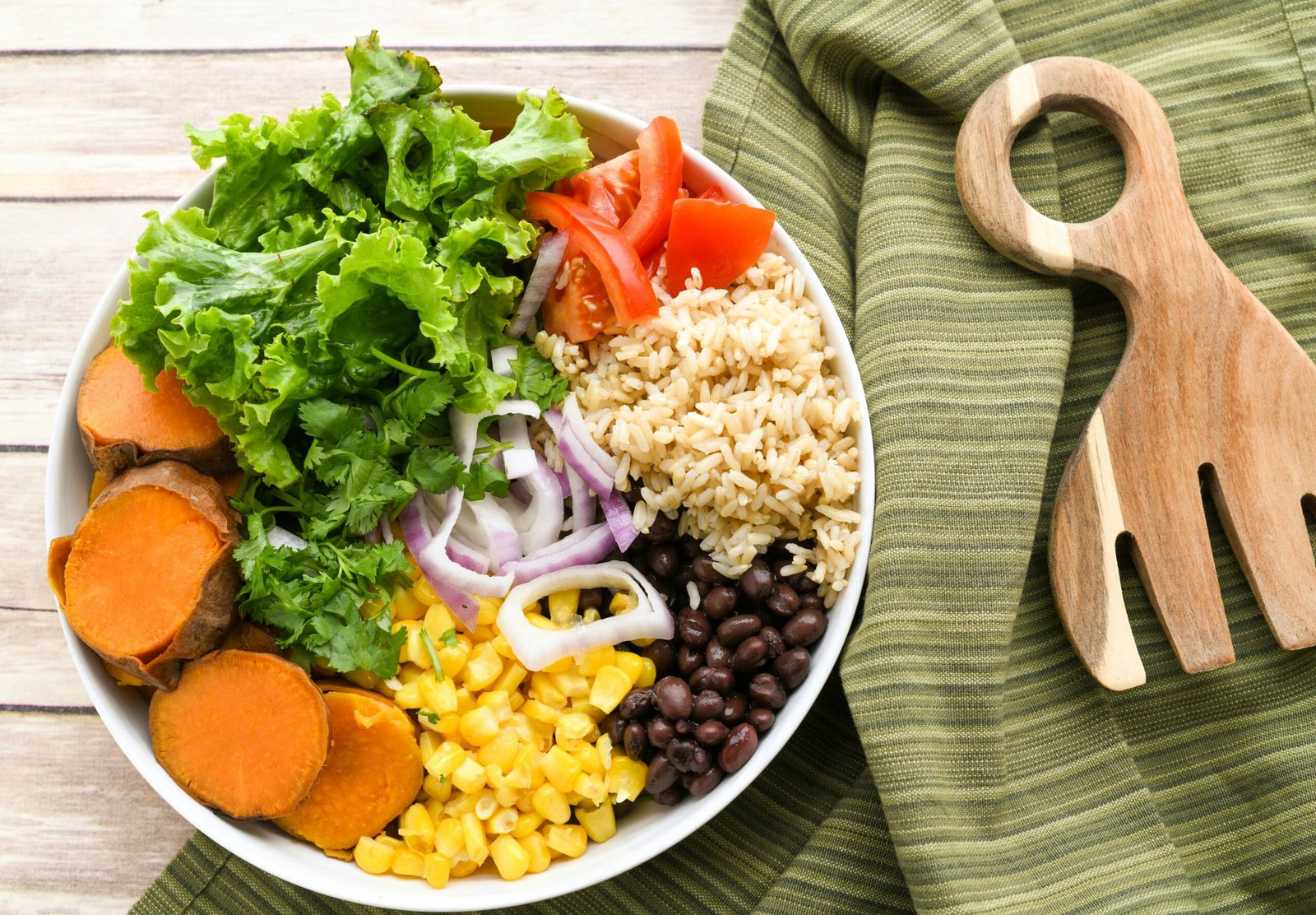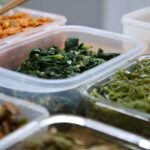Introduction
Eating balanced meals is essential for your overall health and wellness. A balanced meal provides your body with the nutrients it needs to function effectively, supporting everything from energy levels to immune function. However, in today’s fast-paced world, finding the time to prepare healthy meals can be a challenge. Many people juggle busy schedules, work commitments, and family responsibilities, making it all too easy to opt for convenience over nutrition. But creating balanced meals doesn’t have to be time-consuming or complicated.
You might think that healthy eating requires hours spent in the kitchen, but that isn’t the case. With a few simple strategies, you can whip up nutritious meals in minutes. This article aims to guide you through the process of preparing balanced meals quickly, making it easier than ever to nourish your body and maintain a healthy lifestyle.
The goal of this article is to empower you with practical tips, quick recipes, and essential cooking strategies to transform your mealtime routine. By the end, you’ll feel confident in your ability to create nutritious, balanced meals that fit into your busy lifestyle.
Understanding Balanced Meals
Before diving into quick meal preparation, it’s crucial to understand what constitutes a balanced meal. A balanced meal typically includes four essential components: proteins, carbohydrates, healthy fats, and a variety of fruits and vegetables. Each of these elements plays a vital role in your diet.
Proteins

Proteins are the building blocks of your body. They help repair tissues, produce hormones, and support overall growth and development. Including protein in each meal can help keep you feeling full and satisfied, reducing cravings for unhealthy snacks. When planning your meals, aim to include a source of protein. Good options include:
- Lean meats: Chicken, turkey, and lean cuts of beef are excellent choices. They provide high-quality protein and essential amino acids.
- Fish: Fatty fish like salmon, tuna, and sardines are not only rich in protein but also provide heart-healthy omega-3 fatty acids.
- Plant-based proteins: Beans, lentils, tofu, and tempeh are great alternatives for those following a vegetarian or vegan diet. They also come with additional fiber, aiding digestion.
- Dairy: Greek yogurt or cottage cheese can serve as a protein-rich addition to meals or snacks.
Carbohydrates
Carbohydrates are your body’s primary source of energy. They fuel your brain, muscles, and central nervous system. It’s essential to choose complex carbohydrates that provide sustained energy and keep you feeling full longer. Examples include:
- Whole grains: Brown rice, quinoa, oats, and whole grain bread are high in fiber and essential nutrients. They help regulate blood sugar levels and provide long-lasting energy.
- Starchy vegetables: Sweet potatoes, butternut squash, and corn offer not only energy but also vitamins and minerals essential for health.
Healthy Fats
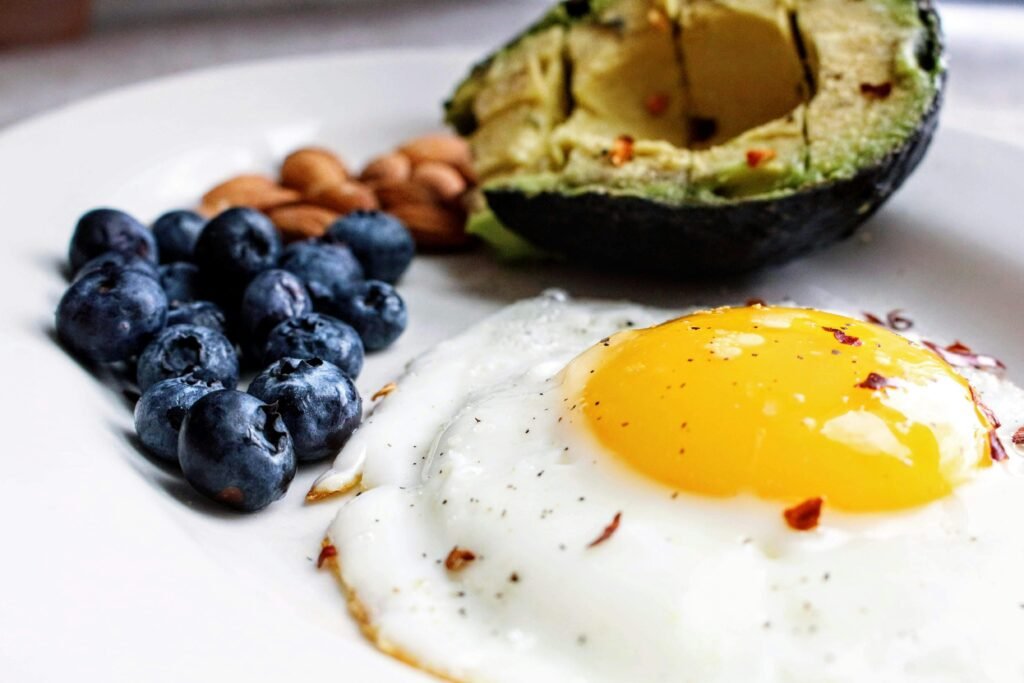
Healthy fats are crucial for brain health, hormone production, and the absorption of certain vitamins. Including healthy fats in your meals can enhance flavor and increase satiety. Examples of healthy fats include:
- Avocados: Rich in monounsaturated fats, avocados can help lower cholesterol levels and provide essential nutrients like potassium and fiber.
- Nuts and seeds: Almonds, walnuts, chia seeds, and flaxseeds are packed with healthy fats, protein, and fiber. They can be easily added to salads, yogurt, or eaten as snacks.
- Olive oil: A great source of healthy fats for cooking or dressing salads, olive oil contains antioxidants and anti-inflammatory properties.
Fruits and Vegetables
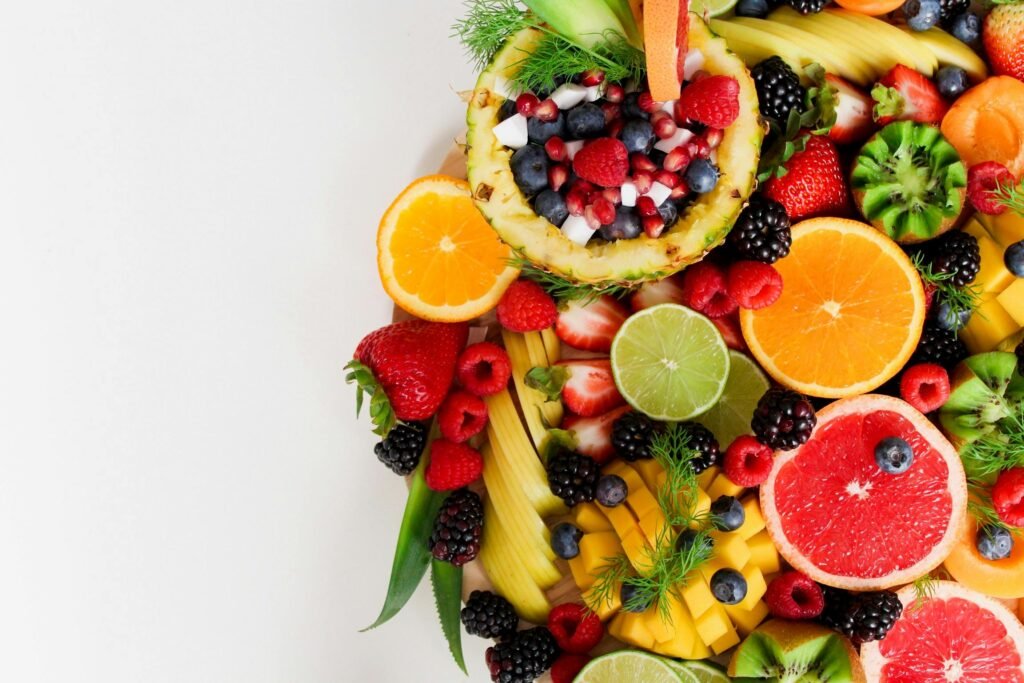
Fruits and vegetables provide essential vitamins, minerals, and fibre. They are low in calories and high in nutrients, making them an important component of a balanced meal. Aim to fill half your plate with a variety of colourful fruits and vegetables. Some easy options to include are:
- Leafy greens: Spinach, kale, and arugula are nutrient-dense and can be easily incorporated into salads, smoothies, or cooked dishes.
- Cruciferous vegetables: Broccoli, cauliflower, and Brussels sprouts are high in fiber and antioxidants, supporting overall health.
- Fruits: Berries, apples, bananas, and citrus fruits add natural sweetness and are packed with vitamins and antioxidants.
A balanced meal is not just about the individual components; it’s about combining them in a way that creates a satisfying and nutritious dish. Understanding these components will empower you to make better food choices and prepare meals that nourish your body.
Quick Meal Planning Strategies

Planning your meals in advance can save you time and make it easier to create balanced meals quickly. Here are some practical tips to streamline your meal planning process:
Preparing a Weekly Meal Plan
Start by dedicating some time each week to plan your meals. Choose a day when you can sit down and think about what you want to eat for the week ahead. This doesn’t have to be elaborate; simply jot down a few meal ideas for breakfast, lunch, and dinner. Consider the following steps:
- Choose a Theme: You might find it helpful to select themes for certain days (e.g., Meatless Monday, Taco Tuesday) to simplify your planning.
- Incorporate Variety: Aim for a variety of proteins, grains, and vegetables throughout the week to keep meals interesting and ensure you’re getting a range of nutrients.
- Plan for Snacks: Include healthy snacks in your meal plan, such as fruits, nuts, or yogurt, to help you stay energised throughout the day.
Creating a Shopping List Based on the Meal Plan
Once you have your meal plan, create a shopping list that includes all the ingredients you’ll need for the week. This helps you stay organised and ensures you have everything on hand when it’s time to cook. Here’s how to create an effective shopping list:
- Categorise Items: Group your list by categories such as produce, proteins, grains, and dairy. This will save you time in the grocery store.
- Check Your Pantry: Before heading out, check what you already have at home to avoid duplicate purchases.
- Stick to the List: Try to resist impulse buys that may not contribute to your healthy eating goals. Sticking to your list will help you stay within budget as well.
Prepping Ingredients in Advance
Spend a little time prepping ingredients to make cooking quicker during the week. You can wash and chop vegetables, cook grains, or marinate proteins in advance. Here are some effective prep strategies:
- Batch Chop: Spend an hour on the weekend chopping vegetables and storing them in airtight containers in the fridge for easy access.
- Cook Grains Ahead: Prepare a batch of quinoa, brown rice, or whole grain pasta that you can use throughout the week. Store them in the fridge to easily add to meals.
- Marinate Proteins: If you enjoy grilled meats or tofu, marinate them in your favorite sauces to enhance flavour and save time during cooking.
Being Flexible with Leftovers
Leftovers can be a lifesaver during hectic weeks. Rather than thinking of leftovers as simply reheating last night’s dinner, consider how you can repurpose them into new meals. For example:
- Reinvent Meals: If you have grilled chicken left over, you can add it to a salad, wrap it in a whole grain tortilla, or toss it with whole grain pasta.
- Create New Dishes: Use leftover roasted vegetables in an omelette or stir-fry them with rice for a quick meal.
- Freeze for Later: If you have more leftovers than you can eat, consider freezing portions for later use, preventing food waste.
Easy Recipe Ideas
Here are some quick and balanced meal ideas that you can prepare in minutes. Each recipe features a different protein source, colourful vegetables, whole grains, and healthy fats.
Recipe One: Quick Chicken Stir-Fry
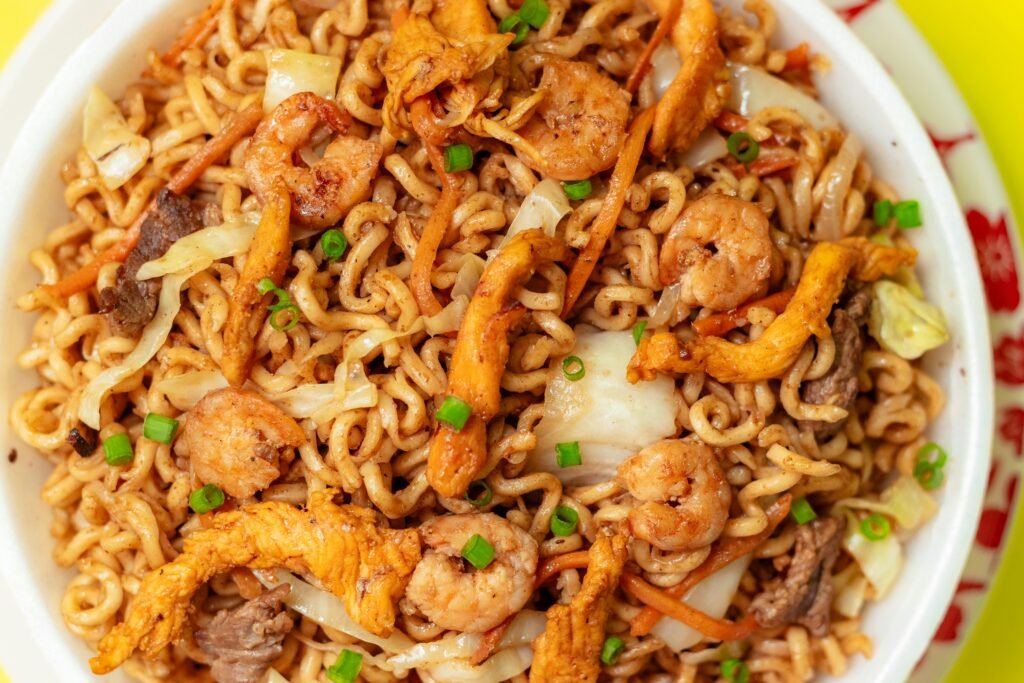
Ingredients:
- 1 cup chicken breast, sliced
- 2 cups mixed vegetables (e.g., bell peppers, broccoli, and snap peas)
- 2 tablespoons soy sauce (or tamari for gluten-free)
- 1 tablespoon olive oil
- 1 cup cooked brown rice
Instructions:
- Heat the Oil: Heat the olive oil in a large frying pan or wok over medium-high heat.
- Cook Chicken: Add the sliced chicken breast and cook for about 5 minutes until browned.
- Add Vegetables: Add the mixed vegetables and continue cooking for another 5 minutes, stirring frequently, until they are tender-crisp.
- Season: Pour in the soy sauce and mix well to combine flavours.
- Serve: Serve the stir-fry over cooked brown rice for a complete meal.
Recipe Two: Vegetarian Quinoa Bowl
Ingredients:
- 1 cup cooked quinoa
- 1 cup canned black beans, rinsed and drained
- 1 cup diced tomatoes
- 1 avocado, diced
- Fresh cilantro, chopped
- Lime juice (to taste)
Instructions:
- Combine Ingredients: In a bowl, combine cooked quinoa, black beans, diced tomatoes, and avocado.
- Dress the Bowl: Drizzle with lime juice and sprinkle with fresh cilantro.
- Mix and Serve: Toss gently and enjoy your nutrient-packed vegetarian bowl.
Recipe Three: Fish Tacos with Slaw
Ingredients:
- 2 fish fillets (e.g., tilapia or cod)
- 1 tablespoon olive oil
- 1 teaspoon cumin
- 1 cup shredded cabbage
- 1 tablespoon lime juice
- Whole grain tortillas
Instructions:
- Season the Fish: Rub the fish fillets with olive oil and cumin.
- Cook the Fish: In a pan, cook the fish for about 3-4 minutes per side until cooked through.
- Prepare Slaw: In a bowl, combine shredded cabbage and lime juice for a quick slaw.
- Assemble Tacos: Flake the fish into pieces, place on tortillas, and top with the cabbage slaw.
Recipe Four: Lentil Salad
Ingredients:
- 1 cup cooked lentils
- 1/2 cup diced cucumber
- 1/2 cup halved cherry tomatoes
- 1/4 cup red onion, chopped
- 2 tablespoons olive oil
- Fresh parsley, chopped
Instructions:
- Combine Salad Ingredients: In a large bowl, mix together cooked lentils, cucumber, cherry tomatoes, and red onion.
- Dress the Salad: Drizzle with olive oil and sprinkle with fresh parsley.
- Toss and Serve: Toss everything together and enjoy a refreshing and filling salad.
Recipe Five: Egg and Veggie Breakfast Wrap
Ingredients:
- 2 eggs
- 1 whole grain tortilla
- 1/2 cup spinach
- 1/4 cup diced bell pepper
- 1 tablespoon feta cheese
Instructions:
- Cook the Eggs: Scramble the eggs in a non-stick skillet until fully cooked.
- Add Veggies: Stir in spinach and bell pepper until they are wilted and softened.
- Assemble the Wrap: Place the egg mixture on the tortilla, sprinkle with feta cheese, and wrap it up.
- Enjoy: Enjoy your healthy breakfast wrap on the go.
Time-Saving Cooking Tips
In addition to meal planning and quick recipes, here are more tips to speed up your cooking process without sacrificing nutrition:
Using One-Pot or Sheet-Pan Meals
One-pot or sheet-pan meals are a fantastic way to minimise cleanup while cooking a complete meal. You can combine protein, vegetables, and grains in a single pot or on one pan and let them cook together. This method saves time and allows flavours to meld beautifully.
- One-Pot Pasta: Cook pasta, protein, and vegetables all in one pot with broth for a quick, delicious meal.
- Sheet-Pan Roasting: Toss vegetables and protein on a baking sheet with olive oil and seasonings, roast until cooked through, and serve.
Investing in Kitchen Gadgets
Consider investing in kitchen gadgets that can make your cooking process more efficient:
- Slow Cookers: Prepare meals in the morning and let them cook slowly throughout the day. When you get home, a hot, nutritious meal awaits you.
- Instant Pots: These multifunctional devices can speed up cooking times for soups, stews, and grains, allowing you to create balanced meals quickly.
Batch Cooking and Freezing Meals
Spend some time on the weekend batch-cooking meals that you can freeze for later. This ensures you have healthy options available during busy weeks. Consider cooking soups, casseroles, or stews in large quantities and freezing them in individual portions.
Embracing Shortcuts
Don’t be afraid to embrace shortcuts when it comes to meal preparation:
- Pre-Cut Vegetables: Buy pre-cut or frozen vegetables to save time washing and chopping.
- Rotisserie Chicken: A store-bought rotisserie chicken can serve as a quick protein source for various meals throughout the week.
Conclusion
Creating balanced meals in minutes is not only achievable but can also be enjoyable! By understanding the components of a balanced meal, implementing smart meal planning strategies, and exploring quick recipe ideas, you can nourish your body and maintain a healthy lifestyle, even on your busiest days.
Remember, healthy eating is about making simple choices that work for you. Try out the recipes provided, experiment with your own variations, and discover what suits your taste and lifestyle best. Your journey to healthier eating starts today, one quick, balanced meal at a time.
Feel free to share your quick meal ideas in the comments, and let’s inspire each other to eat healthily, even when life gets hectic!

